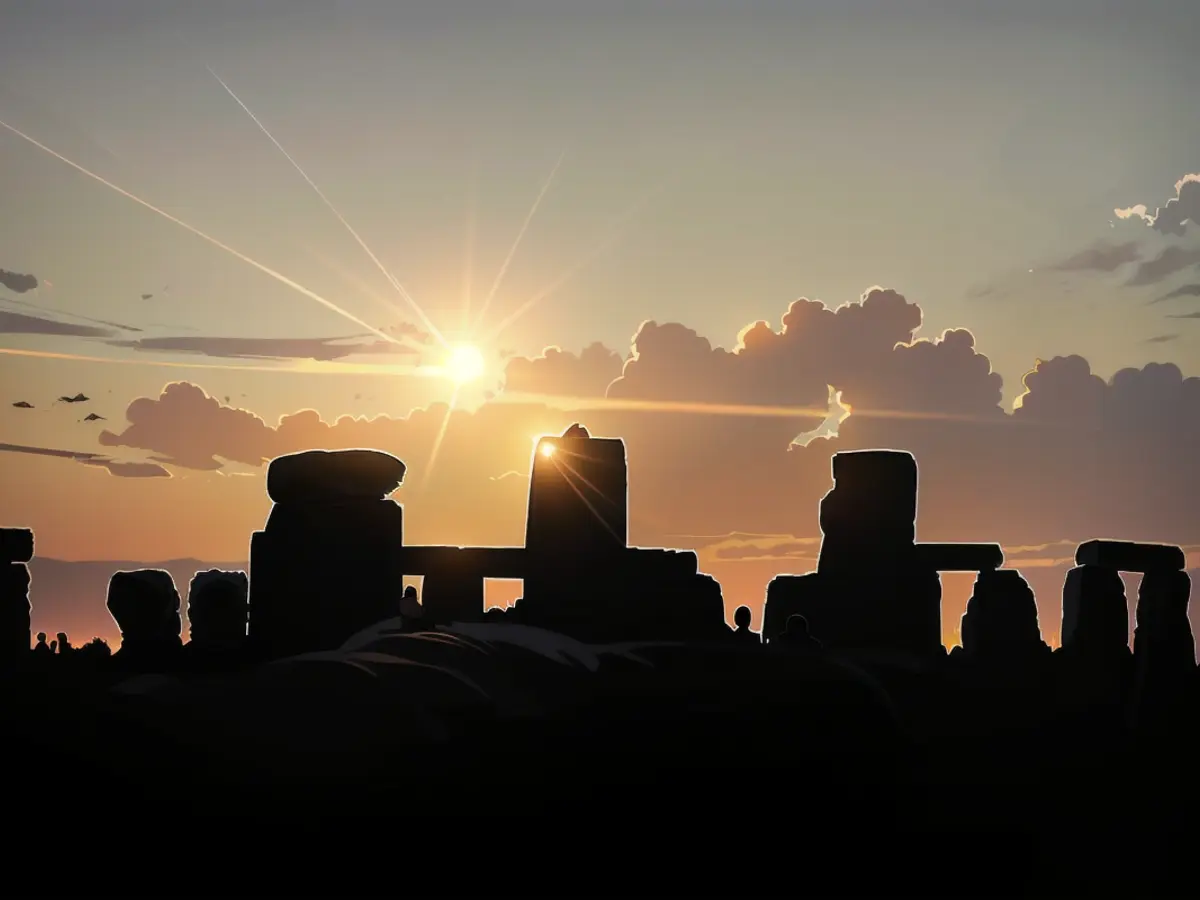The Summer Solstice marks the longest day of the year.
Gaze up at the night sky, free from blazing planets. Instead, constellations hold your gaze with their captivating forms. As summer solstice approaches, the shortest night and astronomical arrival of summer initiate.
In June, observe the prominence of Bootes with its crimson star Arcturus in the southern sky. Also known as the Herdsman or Cowherd, it symbolizes the leading constellation of early summer. The Great Wagon, now in decline, crosses the meridian. The Romans believe that seven plowed oxen reside in the seven star clusters of the Wagon. Bootes circles the Pole Star guiding them.
Due east, the commencement of hot weather is signified by the Summer Triangle's full rising. Comprised of Vega from the Lyre, Deneb from the Swan, and Altair from the Eagle, they come together in a dazzling display. Both Vega and Arcturus are the brightest stars in the northern sky.
To the northeast, you'll notice a half-circle of stars crafting a striking formation. It's the Northern Crown constellation featuring a brighter star dubbed Gemma, the shining gem within the crown.
According to legend, the Greek hero Theseus received this crown from Amphitrite, the sea goddess, for triumphing over the Minotaur on Crete. A man-eating beast, placed in a labyrinth, demanded seven girls and seven boys as sacrifices each year. Armed with Ariadne's thread, Theseus managed to escape the labyrinth and eliminate the threat.
The second half of the sky is still dominated by spring constellations. Far west, Lion prepares for its sunset with Jupiter. Constellation of the Scales takes its place in the southwest. To its east, encounter the Scorpion and the Scorpion Bearer.
No Planets in the Evening
At present, there are no shining planets in the evening sky. In the latter half of the night, Saturn materializes in the east. This ringed planet, presently located in the Water Carrier's constellation, reveals a slightly increased brightness. Mars serves as the second bright planet in the morning sky. Moving through Fishes and into the Ram on the 10th, it also experiences a slight increase in brightness.

By the start of the month, Mars arises around 4:30 a.m, whereas by the end, it rises 1 hour earlier around 3:30 a.m. In the North Hemisphere, winter embraces Mars on the 7th. Venus latches onto the sun, causing the Venus Occultation. As such, you may be able to spot Venus only during the daytime. It doesn't illuminate the night sky under the horizon. In August, Venus transitions to becoming the Evening Star. Unfortunately, Mercury is unobservable.
As June's days progress, Jupiter can be found in the morning sky. He migrates through the "Golden Gate of the Sun's Path" in the Bull constellation. When Jupiter rises, the morning twilight has already dawned. With a telescope, Jupiter can be spotted in the growing morning light.
New Moon arrives June 6, at 2:38 p.m. Before this, our lunar neighbour races across space, resting 368,102 km away from Earth. As it reaches the farthest point from Earth on June 10, it distances itself to 404,076 km. The full moon phase occurs on June 22, nestled within the constellation Sagittarius. On the 27th and 28th, the waning crescent moon skims past Saturn.
The onset of astronomical summer heralds June 20's 10:51 p.m. mark. The summer solstice, the sun's peak journey, promotes the longest day and shortest night of the year at the Taurus - Gemini boundary. It signifies the commencement of summer.
The sun is in turmoil, with rapidly shifting spot areas, reflecting powerful storm systems. Solar physicists recognize the pulsating sun as active. Gigantic eruptions create cloud-like formations, called plasma, which influence Earth's magnetic field. Geomagnetic storms result, displaying northern lights. These events carry substantial consequences, affecting satellite navigation systems, and transformer stations.
The renowned solar researcher Eugene Parker introduced the concepts of "space weather" and "solar storms." Although the solar wind persistently blows, it intensifies to hurricanes during an active sun.

Read also:
- In the realm of astronomy, the Sun, along with other planets, influences the tides and orbits of various celestial bodies.
- For those interested in astrology, the position of the Sun and Moon in conjunction with other planets and stars is believed to impact human behavior and life events.
- Pursuing further education in astronomy can provide an in-depth understanding of the Sun, its role in our solar system, and its impact on Earth's climate and ecosystems.







